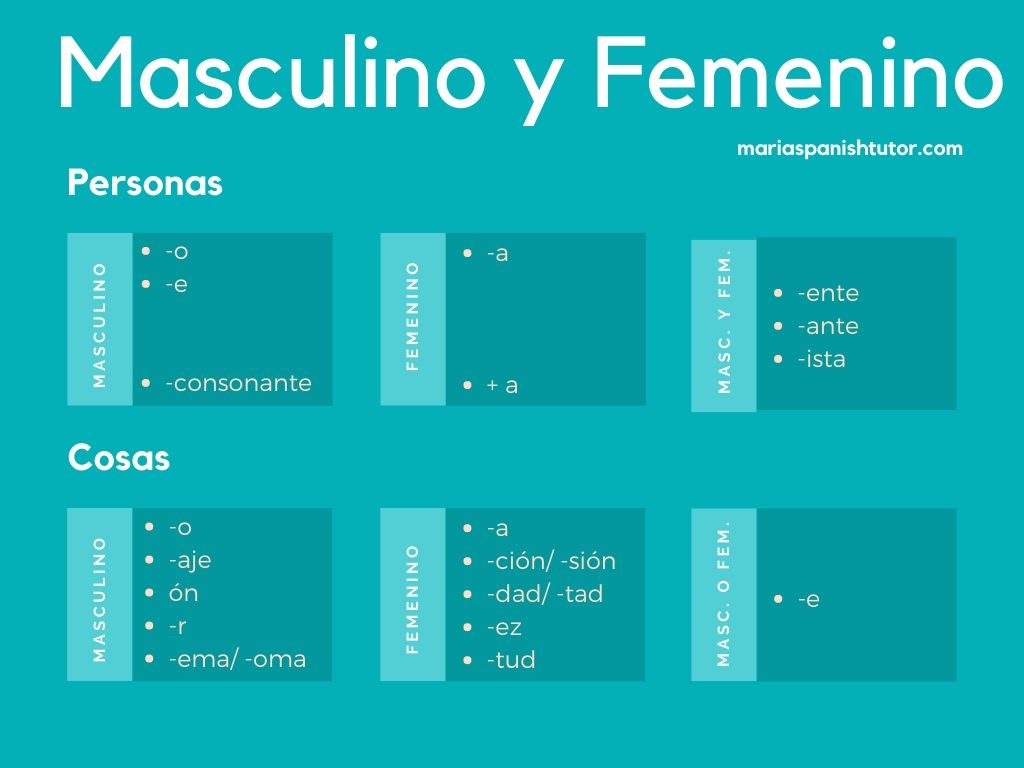In Spanish, the nouns can be either masculine or feminine, there is not neutral in Spanish.
Nouns referring to men are masculine:
el hombre el padre el chico el profesor
Nouns referring to women are feminine:
la mujer la madre la chica la profesora
When the masculine ends in “-o” or “-e” we change those vowels for “-a” to form the feminine:
el chico → la chica
When the masculine ends in “-consonant” we add an “+a” to form the feminine:
el profesor → la profesora
Moreover, there are some endings, “-ente“, “-ante” and “-ista“, that can be masculine or feminine, we just use the appropriate article depending if we are taking about a man or a woman.
el estudiante/ la estudiante
el paciente/ la paciente
el dentista/ la dentista
However, there are some exceptions (la piloto, la modelo, la joven, el guía…), some nouns have a different ending (el rey/ la reina, el actor/ la actriz, el alcalde/ la alcaldesa…) and others have two feminine forms accepted (la jefe/ le jefa, la médico/ la médica, la juez/ la jueza…).
In Spanish things have an “allocated” gender and can be masculine or feminine.
Usually, masculine are the nouns ending in: “-o“, “-aje“, “-ón“, “-r“, “-ema” or “-oma“.
el plato el equipaje el camión el calor el sistema el cromosoma
And feminine are the nouns ending in: “-a“, “-ción“, “-sión“, “-dad“, “-tad“, “-ez” or “-tud“.
la cama la canción la decisión la universidad la libertad la delgadez la juventud
The nouns ending in “-e” can be masculine or feminine. There is no rule when they are masculine or feminine.
Masculine: el coche, el cine, el té, el transporte, etc
Feminine: la gente, la noche, la clase, la serie, etc
Few are the animals that have a masculine and a feminine form. The animals having masculine and feminine forms are frequently those with which the humans have ‘a closer relation’ or are easy to tell apart. For example:
el perro/ la perra el toro/ la vaca el gallo/ la gallina
el gato/ la gata el caballo/ la yegua el burro/ la burra
Most of the animals have either a masculine or feminine name:
Masculine: el pez, el pájaro, el pato, el pavo…
Feminine: la oveja, la cabra, la ballena, la jirafa…
The feminine nouns starting with a strong “a-” do take the masculine article in singular e.g. agua, águila, aula, etc. The reason is that this way we can differentiate which part is the article and which the noun. For example:
agua (pronounced água) → should be: la agua (pronounced lágua) or una agua (pronounced unágua) → it is el agua and un agua in singular
In plural we have an “s” to separate the two “a” so we use then the feminine plural article:
Las aguas Unas aguas
